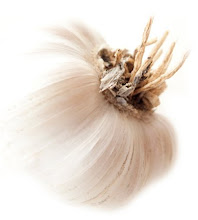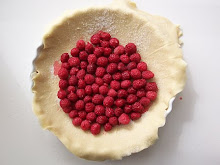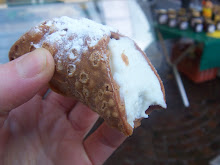 This is the log of a two day venture into the production world of Parmigiano reggiano, following the process from which cow milk is essentially dried in a cylindrical form for a duration period between 18 to 30 months.
This is the log of a two day venture into the production world of Parmigiano reggiano, following the process from which cow milk is essentially dried in a cylindrical form for a duration period between 18 to 30 months.These are the chronicles of the topping on my Pasta:
The poetics of the aged production process filters to all the various phases; Milk from the previous days' milking is left overnight, separating the cream from the milk. The cream is collected and sold off to produce butter, while the remaining skimmed milk is mixed in copper vats with milk from the first milking of the day, rennet and whey (Also from the previous day) causing the milk to coagulate within minutes and begin a fermentation process. (It should be noted that the remaining whey from the milking is fed to the Parma pigs that are used to produce the well known and much talked about on this blog, Prosciutto di Parma- the two local industries are strongly linked with the area and each other). An hour later the cheese is collected from the vats and is placed in moulds. Initially, the wheels are placed for a period of time inside a brine solution, followed by a maturation period on a shelf for a minimum of 12 months, and the 'turning the cheese over' and 'dusting the rind' process/ ritual begins...
Put simply, in order to preserve milk, an organic system had developed in the area, resulting in the production ritual that is carried out on a daily basis to this day, in which every step is carried out with meticulous accuracy, ensuring the end products' quality, while minimizing any material wastage and utilizing centuries old acquired knowledge.
So much for edible architecture…
So much for edible architecture…
 After three hours at the dairy farm, my boots and socks were soaking wet, thus my feet had found themselves icy cold and wet. I reached my pain threshold after two hours thus missing a large portion of explanations in the farm. Turns out that when feet are cold and wet, concentration span is short and mainly focused on pain management.
After three hours at the dairy farm, my boots and socks were soaking wet, thus my feet had found themselves icy cold and wet. I reached my pain threshold after two hours thus missing a large portion of explanations in the farm. Turns out that when feet are cold and wet, concentration span is short and mainly focused on pain management.By lunchtime I was in a dry pair of shoes and sock, and life was beautiful once again. I should mention that lunch, besides an aperitivo consisting of 50 different things that HAD to be sampled, was Gnocchi, risotto, and pasta (freshly made pasta leaves with pumpkin Amaretti filling and béchamel and tomato sauce, the local specialty). ie carb, carb and carb, accompanied by the ever present and always welcome, Lambrusko. Fresh veggies were nowhere to be seen, and frankly, after the whole wet shoes saga, one was glad for some comfort food.
 There was also a meeting with the consortium, a visit to a cheese storage facility as well as a packing factory. The latter housing a variety of machines dedicated to the cutting, wrapping and packaging of Parmigiano Reggiano to halves, quarters, eights, segments, wedges, chunks, meal, cubes and cylinders. It seemed as if a mad engineer's vision had been realized, and he got his way with the cheese.
There was also a meeting with the consortium, a visit to a cheese storage facility as well as a packing factory. The latter housing a variety of machines dedicated to the cutting, wrapping and packaging of Parmigiano Reggiano to halves, quarters, eights, segments, wedges, chunks, meal, cubes and cylinders. It seemed as if a mad engineer's vision had been realized, and he got his way with the cheese. The aesthetics, poetics and integrity of this process is the topping on my pasta.









No comments:
Post a Comment